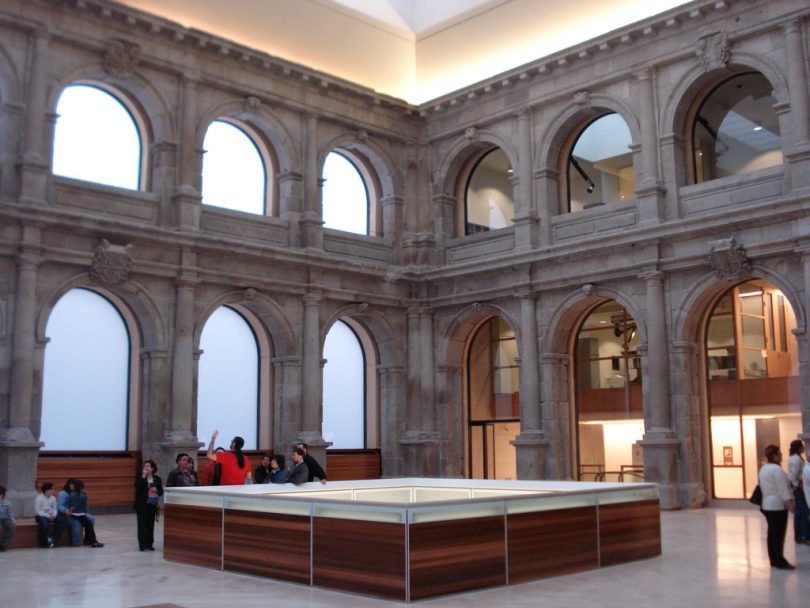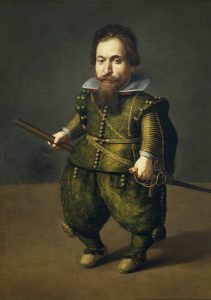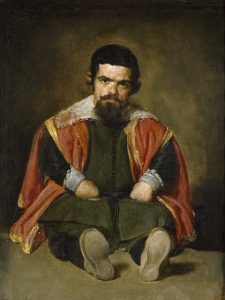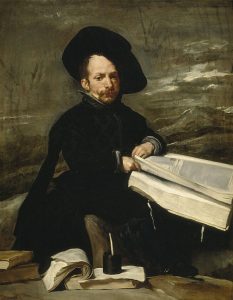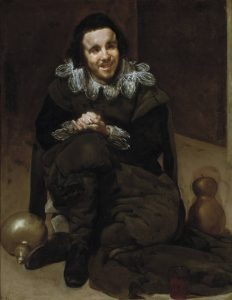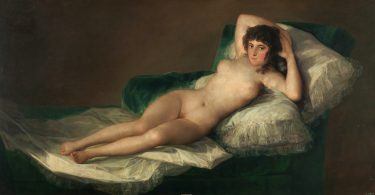The Prado museum is full of beautiful paintings but there was a time in the past that Kings and other noble people liked to collect paintings of strange and awkward people. These dwarfs or jesters were usually very important figures in the daily life of the palace, as they accompanied the young princes and princesses during their formative years and often formed part of their masters and mistresses’ most intimate circles until their death. The Prado Museum has an extensive collection of these paintings with dwarf and jesters, and here below you can see some of the most famous ones.
Juan van der Hamen y León
Painter Juan van der Hamen y León, born in Madrid from an aristocratic Dutch family who had moved to Spain, was in general more famous for his still life paintings, called bodegones in Spanish. Although Velázquez is the painter who is most famous for his portraits of dwarfs in this case it was Van der Hamen who depicted this court dwarf. Van der Hamen painted this dwarf dressed in luxurious clothes, like a courtier, in a pose that suggests pride and distance, carrying a knight’s sword and a general’s baton. The dwarf, possibly “Bartolo” or “Bartolillo”, was a dwarf who was included in the royal progress during the Prince of Wales’ visit to El Escorial in 1623.
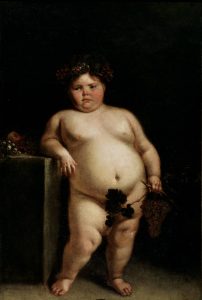
Eugenia Martínez Vallejo, also known as the Giant Girl, Juan Carreño de Miranda Click on Image for high definition
The Giant Girl – Prado Museum
The next painting is a portrait from a young girl named Eugenia Martínez Vallejo, also known as the Giant Girl at the time and is made by Spanish painter Juan Carreño de Miranda. The painting depicts Eugenia nude and adorned with grape leaves and grape clusters, making this an allusion to Bacchus, the Roman god of wine.
In 1680, this girl was taken to the court to be exhibited because of her extraordinary proportions. This should be understood in terms of the taste for freaks of nature that had passed down from the sixteenth century and was still present in the seventeenth, when buffoons and different entertaining personages lived at the Palace in order to amuse the Monarchs and their children.
It is very possible that Eugenia suffered from the Prader-Willi syndrome, a rare genetic disorder. Eugenia died at the age of 25.
The next painting is from Diego Velazquez and is a portrait of the Buffoon Sebastián de Morra, a dwarf and jester at the court of Philip IV of Spain. Don Sebastian de Morra was a servant to the Cardinal-Infante don Fernando in Flanders. He returned to Spain in 1643 and entered the service of Balthasar Charles, Prince of Asturias, dying in October 1649. It is known that the Prince came to like him, as is revealed in the former’s will, which left various sumptuary objects to him. The dwarf is depicted very serious and with a sad expression on his face by Velazquez which implicates Velazquez’s empathy towards the dwarfs situation.
The next jester is also one from Velazquez and is called “The Jester Don Diego de Acedo”. This painting is one of a series of portraits of dwarfs done at the court of Philip IV of Spain by Velázquez. The dwarf depicted here; Don Diego de Acedo, actually worked at the court as a secretary and was famous for his female conquests and was a well-known womanizer. He worked at the Palace from 1635 until his death in 1660.
The buffoon Calabacillas also formed part of the series of the four jesters painted for the Torre de la Parada hunting lodge, by Velazquez. Calabacillas was a jester but he was not a dwarf as is clear from the forced pose in which he is depicted. He is portrayed with a distinct squint which led him to be nicknamed “bizco” (squint-eyed). Next to him we can see some pumpkins which is where his other nickname came from (pumpkin is “calabaza” in Spanish and also meant simpleton hence “Calabacillas”). The jester, despite his low social class, did not live badly. He had a carriage pulled by a mule and his own ration of food, much more than most during the Spanish Golden Age.



